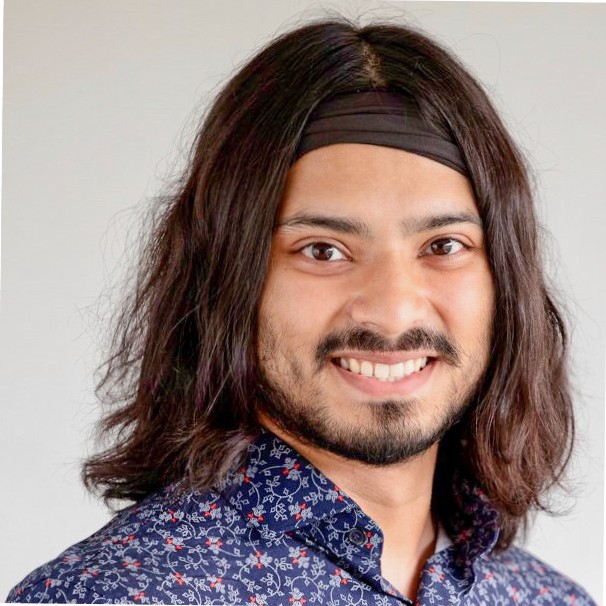Inspired to Inspire Future Scientists
Nayem Haque not only wants to inspire tomorrow’s scientists, but also to motivate the next generation of mentors who train these aspiring science professionals.
Published July 17, 2024
By Nicole Pope

A mentor for The New York Academy of Sciences is motivated to inspire tomorrow’s scientists as a result of his own positive classroom experience nearly a decade and a half ago.
“Walking through the doors of my old school as an adult, I was overwhelmed with gratitude. The sight of bustling classrooms, dedicated teachers, and supportive community members highlighted just how much had changed since I attended the school 14 years ago,” says Nayem Haque, a PhD student in biomedical science at Albert Einstein College of Medicine, who has returned to his elementary school in the South Bronx to provide after-school mentoring in science.
Nayem is one of more than 1,500 mentors that the Academy has placed in over 800 area classrooms since 2010 as part of its highly regarded Afterschool STEM Mentoring Program (ASMP).
Creating “a self-sustaining loop”
The young scientist hopes his engagement will inspire the children he teaches to embrace science and, eventually, follow in his footsteps and help others around them.
“Maybe they will come back to their old school like I did, and create a self-sustaining loop,” he says.
The mentors – most of them students and early career scientists – are placed in after school classrooms at schools to increase STEM instruction for students. When Nayem was in elementary school, his exposure to science was minimal.
He only discovered his passion as an undergraduate student studying biological sciences when he had an opportunity to work with one of his professors, in a research lab. From then on, Nayem’s path was set: the young man opted to pursue a career in biomedical sciences.
“I like research. I like the independence of having your own project but also being part of a team,” he says. “I’ve been able to travel to attend conferences and present my research.”
After obtaining a BSc in biological sciences from the University at Buffalo, Nayem is now studying for a doctorate. When he heard about the ASMP program, he jumped at the opportunity.
“I’m giving back to the community I grew up in. When I was in school, a lot of the other students were smarter than me, but growing up in the South Bronx, it’s very easy to get mixed up with the wrong people – easy for people to end up in less-than-ideal situations,” he says. “I feel that if students had the opportunities and the exposure, they could end up in higher education and it could have a big impact on their lives.”
Effective Engagement Begins at an Early Age
Getting children interested in science at an early age is important because it allows them to pursue opportunities to join special science programs or camps at the elementary or middle school level, Nayem believes. He finds second and third graders particularly inquisitive: they display a genuine interest by asking a lot of questions in class, Nayem has observed. By fifth grade, students can get more distracted, but he deploys proven techniques to keep them engaged.
“We work with a site mentor – an after-school specialist, who helps us prepare the lessons and keep the class focused,” says Nayem.
These specialists work with the students both during and outside of ASMP programming and assist mentors with strategies to manage the dynamics of an informal classroom environment.
In addition, two scientist mentors are often paired up to teach, which makes it easier to work with individual children and ensure that all students are engaged with the lessons.
“If kids don’t get the concepts we teach and we move on, they lose interest and won’t learn,” Nayem says.
The mentors are given a 10-week curriculum and the resources necessary to conduct high quality, hands-on experiments in the classroom.
“This semester, students are learning about the properties of light,” explains Nayem, who enjoys co-mentoring with a friend he recruited for the ASMP program. “We teach them about lasers, microscopes, and optical illusions. Depending on their age group, some kids prefer a lectured approach; but younger ones prefer a hands-on approach and experiments.”
An Important Resource
After-school science classes can have a transformative effect on young school children.
“The ASMP program is a step in the right direction. It’s a program that can foster a lot of interest in STEM in places where there aren’t many resources,” Nayem says. “It is really critical for students to have this head start.”
But mentors, too, benefit from the program. Aside from the satisfaction of serving the community, Nayem says that mentoring school children of different ages and having to adapt his teaching approach and vocabulary has helped him develop his communication skills.
“It has helped me with professional presentations, when I present my research to the school and faculty,” Nayem says, adding that he is considering a teaching career. “I try to break down my presentation as much as possible, so I usually get good feedback.”
Now in the second year of his PhD program, the young man plans to remain an ASMP mentor until he completes his doctorate. To other young scientists who, like him, want to help the next generation discover STEM, he strongly advocates joining the ASMP.
“It’s a really fulfilling opportunity. It is especially rewarding to see the switch that happens several weeks into the program in students who may not have been very engaged at the beginning,” he says. “You see you’re making a tangible change.”